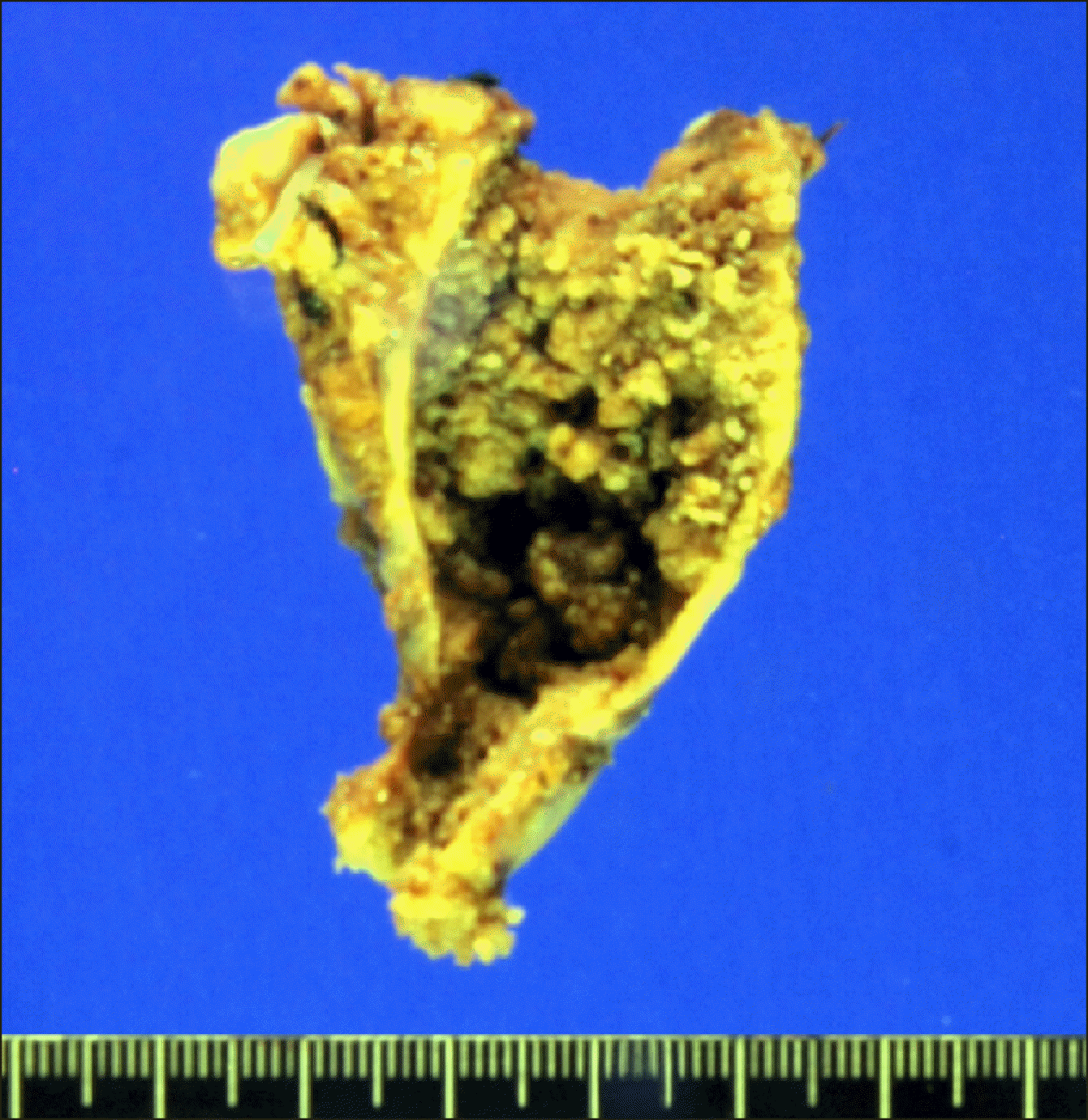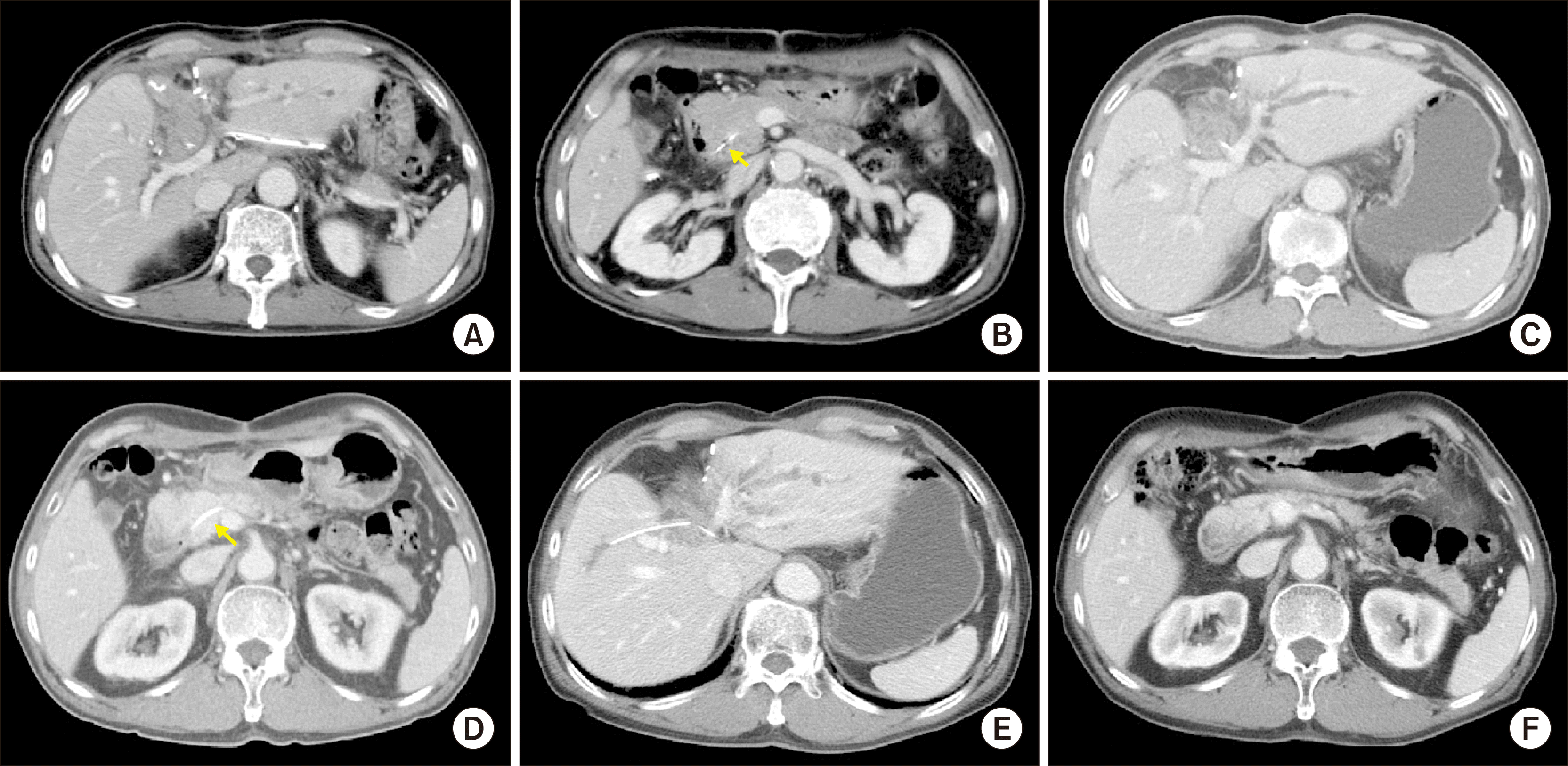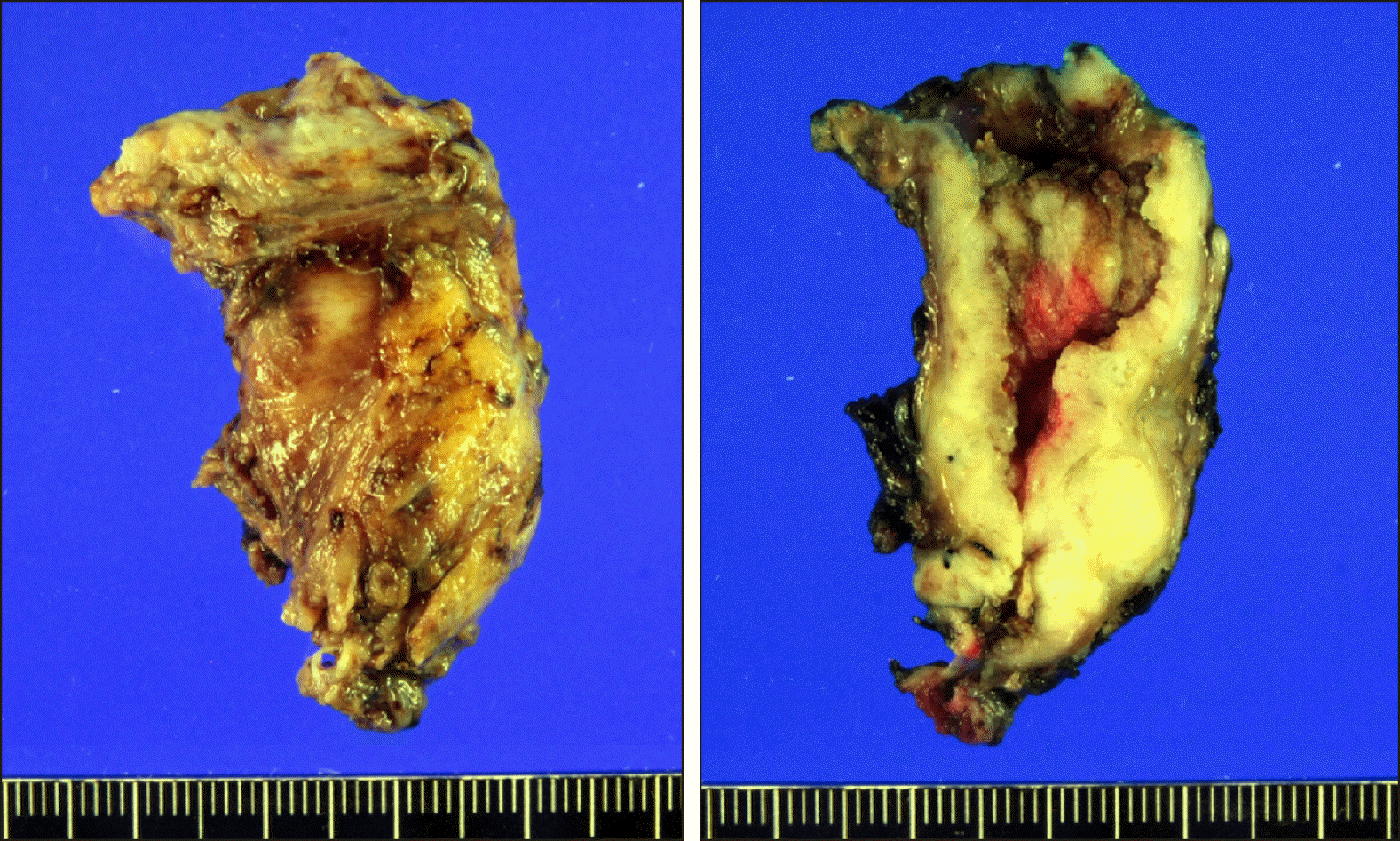1. Khan SA, Taylor-Robinson SD, Toledano MB, Beck A, Elliott P, Thomas HC. 2002; Changing international trends in mortality rates for liver, biliary and pancreatic tumours. J Hepatol. 37:806–813. DOI:
10.1016/S0168-8278(02)00297-0. PMID:
12445422.

2. Murakami Y, Uemura K, Sudo T, Hashimoto Y, Nakashima A, Kondo N, et al. 2011; Prognostic factors after surgical resection for intrahepatic, hilar, and distal cholangiocarcinoma. Ann Surg Oncol. 18:651–658. DOI:
10.1245/s10434-010-1325-4. PMID:
20945107.

3. Sakamoto Y, Kosuge T, Shimada K, Sano T, Ojima H, Yamamoto J, et al. 2005; Prognostic factors of surgical resection in middle and distal bile duct cancer: an analysis of 55 patients concerning the significance of ductal and radial margins. Surgery. 137:396–402. DOI:
10.1016/j.surg.2004.10.008. PMID:
15800484.

4. Hong SM, Pawlik TM, Cho H, Aggarwal B, Goggins M, Hruban RH, et al. 2009; Depth of tumor invasion better predicts prognosis than the current American Joint Committee on Cancer T classification for distal bile duct carcinoma. Surgery. 146:250–257. DOI:
10.1016/j.surg.2009.02.023. PMID:
19628081. PMCID:
PMC3402913.

5. Rizvi S, Khan SA, Hallemeier CL, Kelley RK, Gores GJ. 2018; Cholangiocarcinoma - evolving concepts and therapeutic strategies. Nat Rev Clin Oncol. 15:95–111. DOI:
10.1038/nrclinonc.2017.157. PMID:
28994423. PMCID:
PMC5819599.

6. Sahai P, Kumar S. 2017; External radiotherapy and brachytherapy in the management of extrahepatic and intrahepatic cholangiocarcinoma: available evidence. Br J Radiol. 90:20170061. DOI:
10.1259/bjr.20170061. PMID:
28466653. PMCID:
PMC5603950.

7. Kiriyama M, Ebata T, Aoba T, Kaneoka Y, Arai T, Shimizu Y, et al. 2015; Prognostic impact of lymph node metastasis in distal cholangiocarcinoma. Br J Surg. 102:399–406. DOI:
10.1002/bjs.9752. PMID:
25611179.
8. Kimura W, Miyata H, Gotoh M, Hirai I, Kenjo A, Kitagawa Y, et al. 2014; A pancreaticoduodenectomy risk model derived from 8575 cases from a national single-race population (Japanese) using a web-based data entry system: the 30-day and in-hospital mortality rates for pancreaticoduodenectomy. Ann Surg. 259:773–780. DOI:
10.1097/SLA.0000000000000263. PMID:
24253151.
9. Addeo P, Delpero JR, Paye F, Oussoultzoglou E, Fuchshuber PR, Sauvanet A, et al. 2014; Pancreatic fistula after a pancreaticoduodenectomy for ductal adenocarcinoma and its association with morbidity: a multicentre study of the French Surgical Association. HPB (Oxford). 16:46–55. DOI:
10.1111/hpb.12063. PMID:
23461663. PMCID:
PMC3892314.

10. Sugimoto M, Takahashi S, Gotohda N, Kato Y, Kinoshita T, Shibasaki H, et al. 2013; Schematic pancreatic configuration: a risk assessment for postoperative pancreatic fistula after pancreaticoduodenectomy. J Gastrointest Surg. 17:1744–1751. DOI:
10.1007/s11605-013-2320-4. PMID:
23975030.

11. Hwang S, Lee SG, Kim KH, Ahn CS, Moon DB, Ha TY, et al. 2008; Extended extrahepatic bile duct resection to avoid performing pancreatoduodenectomy in patients with mid bile duct cancer. Dig Surg. 25:74–79. DOI:
10.1159/000118025. PMID:
18292664.

12. Lee SJ, Hwang S, Ha TY, Kim KH, Ahn CS, Moon DB, et al. 2013; Technical knacks and outcomes of extended extrahepatic bile duct resection in patients with mid bile duct cancer. Korean J Hepatobiliary Pancreat Surg. 17:109–112. DOI:
10.14701/kjhbps.2013.17.3.109. PMID:
26155223. PMCID:
PMC4304529.

13. Hwang S, Jung DJ, Ha TY. 2020; Application of suction-type cigarette drain in leak-prone hepatopancreatobiliary surgery. Ann Hepatobiliary Pancreat Surg. 24:305–308. DOI:
10.14701/ahbps.2020.24.3.305. PMID:
32843596.

14. Kolb A, Kleeff J, Frohlich B, Werner J, Friess H, Büchler MW. 2009; Resection of the intrapancreatic bile duct preserving the pancreas. J Hepatobiliary Pancreat Surg. 16:31–34. DOI:
10.1007/s00534-008-0013-2. PMID:
19089312.

15. Hwang S, Moon KM, Park JI, Kim MH, Lee SG. 2007; Retroduodenal resection of ampullary carcinoid tumor in a patient with cavernous transformation of the portal vein. J Gastrointest Surg. 11:1322–1327. DOI:
10.1007/s11605-007-0240-x. PMID:
17674113.

16. Nishida Y, Sugimoto M, Kojima M, Gotohda N, Konishi M, Takahashi S. 2017; Pancreas-preserving resection of lower biliary tract adenocarcinoma: a coring-out technique. Ann Gastroenterol Surg. 1:150–155. DOI:
10.1002/ags3.12021. PMID:
29863138. PMCID:
PMC5881344.

17. Kim JK, Hwang HK, Park JS, Cho SI, Yoon DS, Chi HS. 2008; Left hemihepatectomy and caudate lobectomy and complete extrahepatic bile duct resection using transduodenal approach for hilar cholangiocarcinoma arsing from biliary papillomatosis. J Surg Oncol. 98:139–142. DOI:
10.1002/jso.21089. PMID:
18521837.

18. Hong S, Song KB, Lee YJ, Park KM, Kim SC, Hwang DW, et al. 2018; Transduodenal ampullectomy for ampullary tumors - single center experience of consecutive 26 patients. Ann Surg Treat Res. 95:22–28. DOI:
10.4174/astr.2018.95.1.22. PMID:
29963536. PMCID:
PMC6024084.










 PDF
PDF Citation
Citation Print
Print







 XML Download
XML Download